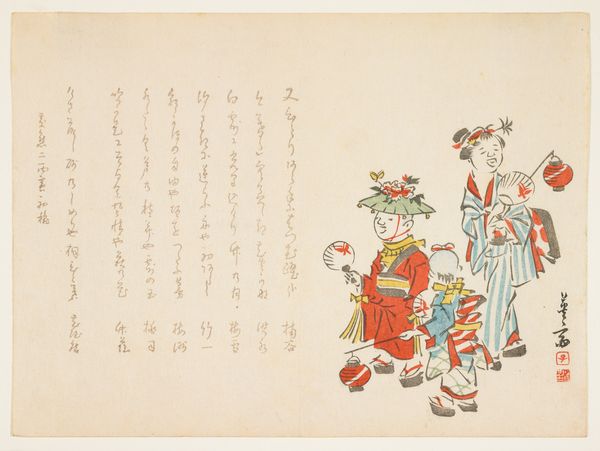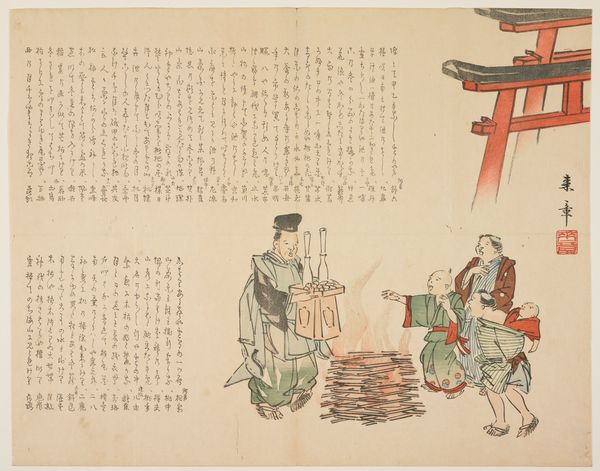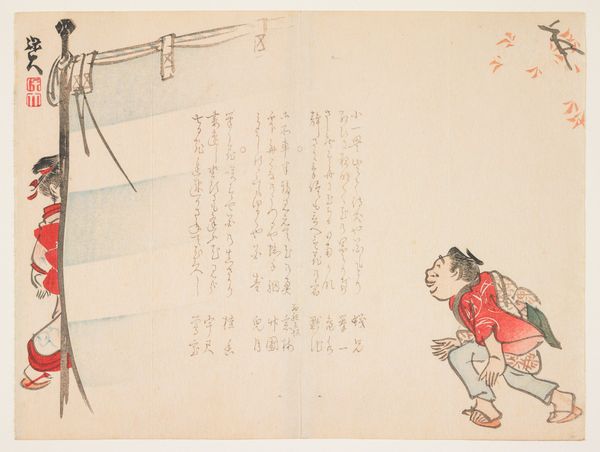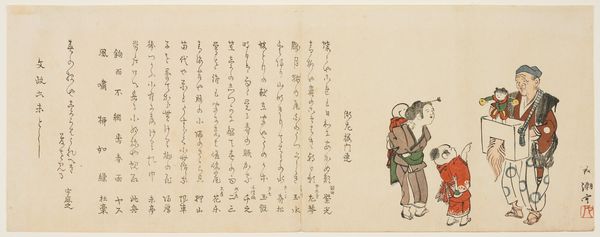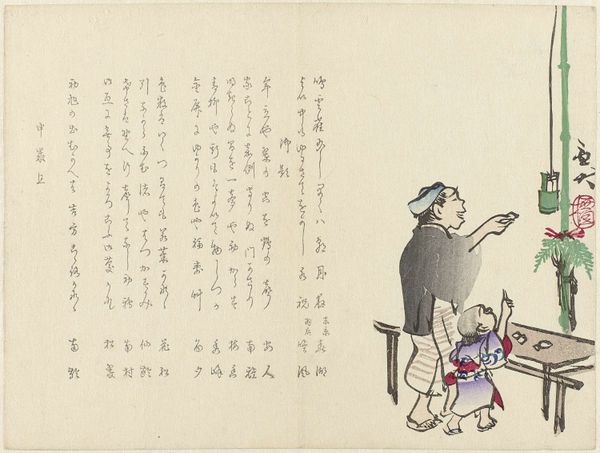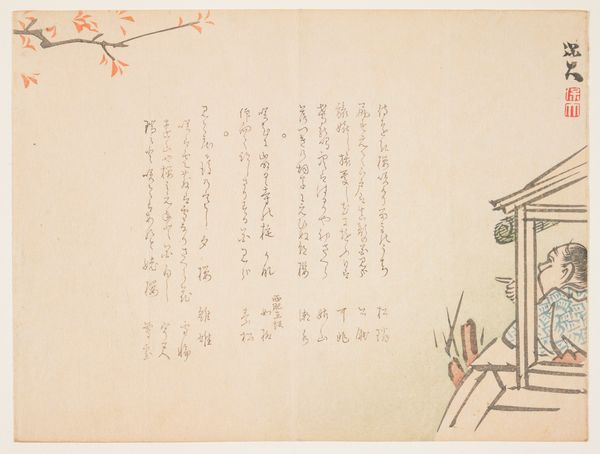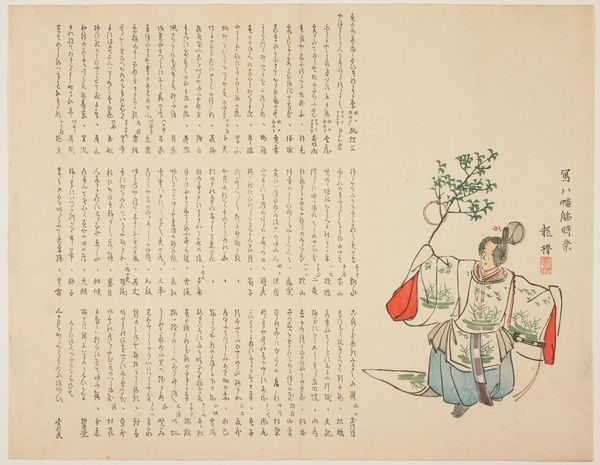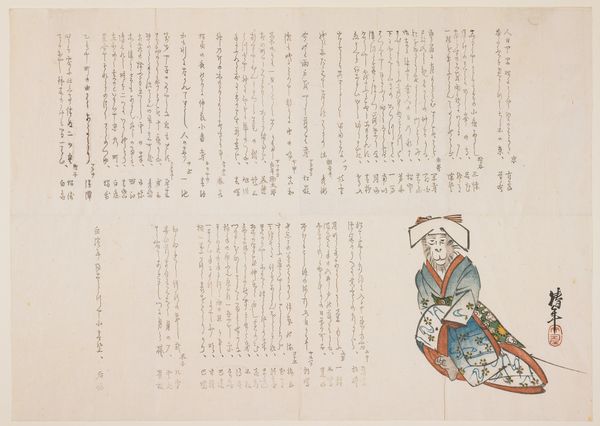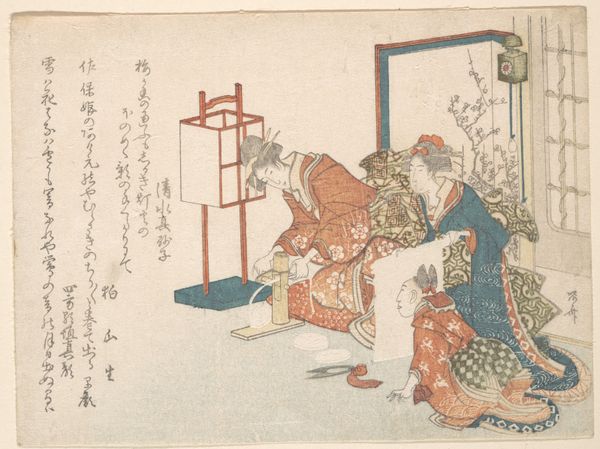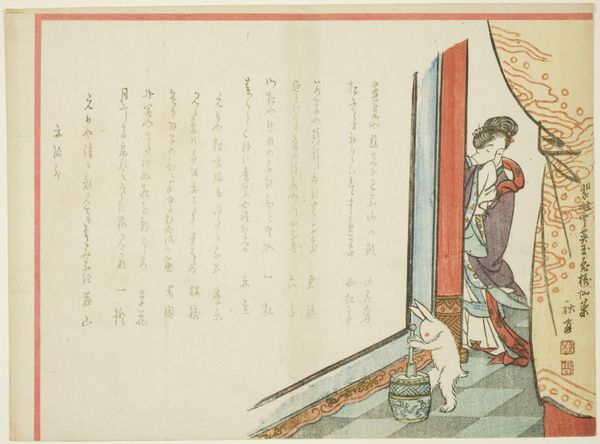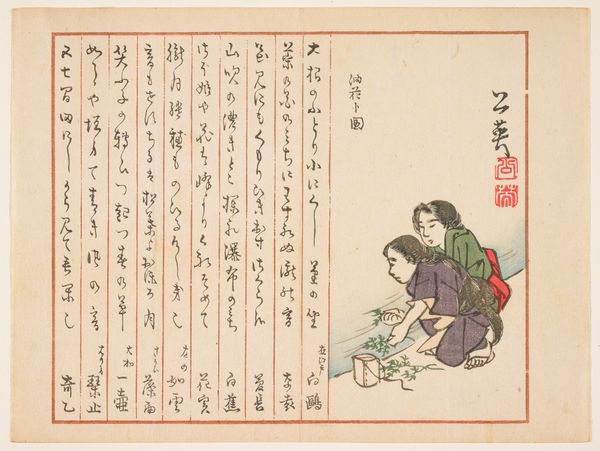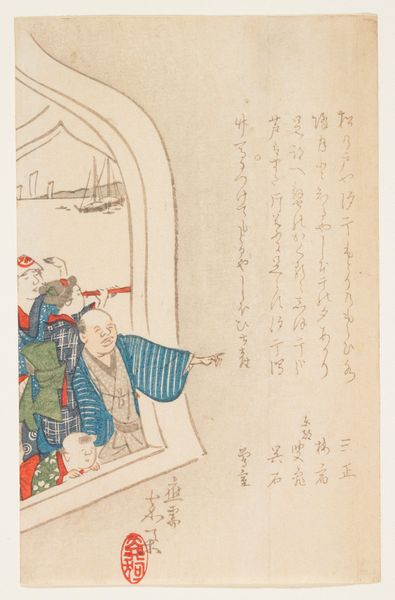
Dimensions: height 575 mm, width 218 mm
Copyright: Rijks Museum: Open Domain
Editor: So, this is Anyosai’s "Priester met ema," from 1894, it's a Japanese print. It's pretty whimsical, I think, especially the figure with the sort of…rat-like face. What do you see in it? Curator: Well, let's think about what's happening in the art world and society at this time. This print is created in a period of great social and cultural change in Japan. How do you think it reflects that era? Editor: I suppose with the figure dressed as a priest carrying a votive tablet with a horse, you get a blend of religious and folk elements. But does the rat face… poke fun at the established order somehow? Curator: Perhaps. Ukiyo-e prints were, in their time, incredibly popular and often addressed social issues with a degree of satire or commentary. Consider the distribution of prints at the time. Who typically consumed this art, and what might they have thought about such a representation of a priest? Editor: So, not the elite then, right? The rat face, alongside all of that handwritten script in the upper-left corner, must speak to common beliefs. It almost looks like he’s smuggling the ema under the Torii gate, almost mischievously? Curator: Interesting observation. How might that read within the context of the socio-political landscape of Meiji-era Japan and what that might say about art’s evolving role. Also the symbolism behind choosing rat in ukiyo-e context. Editor: Okay, that framing really makes me reconsider what I thought was purely quirky about this print. There are cultural currents under the surface! Curator: Exactly! By thinking about distribution, social standing, political events, we start to think about the painting not as art object, but socio-cultural piece.
Comments
No comments
Be the first to comment and join the conversation on the ultimate creative platform.


